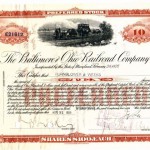An investing strategy is a plan for how to save money and help it grow. Sometimes an investing strategy can be as simple as “plan for trading stocks,” but it really means a lot more.
Liquidity, Risk, and Potential Returns
All investments balance liquidity (how easily it can be converted into cash for other use), risk (the chance of the investment to lose value), and potential returns (how quickly and how much your investment can grow).
The balance among these three areas depends on your own individual taste, but how you view them will determine what kinds of investments you choose. Let’s take a look at several investment options with a look at the liquidity, risk, and potential growth you will typically experience.
Security Types
The “security type” is what you are holding or investing in. Security types vary widely, but a balanced portfolio should include a mix of the options available.
Cash And Bank Deposits

Liquidity: Very High
Risk: Low
Potential Growth: Zero or Negative
Cash, believe it or not, is an investment in and of itself. Cash and bank deposits you can withdraw quickly are the most liquid assets, since liquidity refers to how quickly you can convert any investment into cash.
Being able to always use cash for whatever you want is valuable. That is why “emergency funds” exist as cash and bank deposits, not as bars of gold. On the other hand, cash kept in a safe, at home, or in a safety deposit box does not grow in value, and cash kept in a savings account may lose value over time due to inflation.
Certificates of Deposit

Liquidity: Low
Risk: Low
Potential Growth: Low
A Certificate of Deposit is like a savings account with a locked-in interest rate. The difference is that money invested in a CD cannot be withdrawn for a certain period of time. When you open a CD, you choose a length of time (e.g. 3 months to 20 years). CDs are very safe investments but they have a very low potential for growth since the interest rates are low (e.g. 0.4% to 1.6%).
Stocks

Liquidity: High
Risk: Medium
Potential Growth: High
When you ask people about investing, stocks are usually what comes to mind. If you want to invest in stocks, you have several choices. You can buy stock in a single company. You can invest in a mutual fund which is a fund representing several different stocks. You can also invest in an ETF, an exchange-traded fund which represents a collection of stocks traded within a certain index, such as the companies in the S&P 500. As far as an investment strategy is concerned, these options represent the same thing – buying a piece of one or many companies in exchange for a share of their profits.
Bonds
Liquidity: Medium
Risk: Low
Potential Growth: Medium
Bonds come in three “flavors” – Corporate Bonds, Treasury Bonds, and other Government Bonds. Unlike stocks, a bond is a loan that you make to a company or the government for a period of time. When the bond matures (when the period of time is over), the organization will pay back the loan amount plus interest. Corporate bonds from large companies and treasury bonds are usually very safe investments with a low rate of return. Junk bonds are issued by companies with lower credit ratings who are in need of money. Because these companies are a higher risk, they offer to pay out higher interest rates to investors. Junk bonds have a high default rate, so they are considered speculative.
Real Estate

Liquidity: Low
Risk: Medium
Potential Growth: Medium
Real Estate includes land and buildings. Until fairly recently, the bulk of “retirement savings” was in the form of real estate — the house you lived in. People would buy a house and hope that the value grew enough over the next 30-40 years to sell it and use the profits for retirement.
In the 1980s, flipping houses became a popular way to invest in property and gain a profit. Flipping houses involves buying damaged or discounted houses, doing necessary repairs, and then selling them for profit.
Since the housing market crash in 2007, people are more wary of real estate investing, but owning a home is still a very popular long-term investment strategy.
Precious Metals

Liquidity: High
Risk: Medium
Potential Growth: Medium
Many investors try to buy gold and other precious metals as an investment. The value of these precious metals rarely declines, so this is seen as a way to protect against inflation. But there is no guarantee as to their value. In 2011, the “gold bubble” burst, making the prices of the metals more volatile than before. (A bubble occurs when speculators bid up prices of an item beyond its intrinsic value. Gold is not really an important metal in our society. It is used mostly for gold jewelry, a luxury item. The price of gold rose to $1895 an ounce, but then began a steady decline to $1075 an ounce.)
Holding precious metals as a safeguard against market uncertainty in other security types is still very popular. However, financial planners recommend that no more than 10% of your portfolio should be invested in gold.
Derivatives

Liquidity: Medium
Risk: High
Potential Growth: High
A derivative is a financial security whose value is reliant upon or derived from an underlying asset or group of assets such as stock options and futures. Being a “derivative” means that it “derives” its value from something else. A stock option gives an investor the right, but not the obligation, to buy or sell a stock at an agreed upon price. The stock option has value because the stock that it lets you buy has value; however, the option itself has no value unless you use it. A futures contract is a legal agreement to buy or sell something at a predetermined price at a specified time in the future. Future contracts are used with commodities like oil, natural gas, corn, and wheat.
Derivatives are most useful for hedging, such as buying a stock option for a stock you think will go up in value that you don’t necessarily want to buy right now.
Tips and Tricks
Many years ago, a common piece of investment advice was that if you are building an investment strategy for retirement, a large chunk of your “nest egg” would be held in your house, which would mature with the market rates.
When looking at the remainder of your investment assets, financial planners would recommend, as a “rule of thumb,” to balance your assets between stocks and bonds according to your age. This strategy involved starting with the number 100 and then subtracting your age. The resulting number would represent the percentage of your asset portfolio that should be invested in stocks. The remaining percentage should be invested in bonds. This meant that an 18-year-old would have 82% of their portfolio invested in stocks and 18% in bonds.
This advice is a bit outdated, but it does include some wisdom that all investors should be aware of.
Don’t Keep All Your Eggs In One Basket
Diversify at a few different levels. Split your assets into a few different security types. In the classic example, the saver would have about 50% of their savings stored in real estate with the remaining 50% divided between stocks and bonds. This meant that if there was a fall in housing prices, the individual was protected by having money invested in stocks and bonds. If the stock market started to fall, the saver would still be okay because he’d have the house and bonds.
Bonds are a safer investment since their value is determined by the prevailing interest rates, so they are more insulated from market fluctuations. They also benefit if there is a surge in housing prices, stock prices, and interest rates.
Use an Evolving Portfolio
The old suggestion of invest in “more bonds as you get older” is based on the idea that as you get closer to retirement, your portfolio should become more conservative. The closer you are to retirement, the less risk you want to take with your money. If you have several stocks that lose value when you’re 25, you still have 40 years to make up that lost income before you retire. However, if your stocks lose value when you are 62, it becomes a lot more difficult to make up that lost income.
Common Investing Strategies
If you’re ready to start investing, there are a couple of strategies to keep in mind. Most long-term investing strategies are based on one, or a combination, of these.
Buy And Hold
“If you aren’t willing to own a stock for ten years, don’t even think about owning it for ten minutes.” – Warren Buffet
The “buy-and-hold” strategy is based on the idea that you do extensive research on what you’re buying, choosing your investments for solid long-term reasoning, then buy and hold onto them, regardless of what the market prices do. The only time a buy-and-hold investor should sell is either
- When the underlying reasons why you bought the stock change (such as the company’s management changing to a team with a different business strategy you don’t agree with)
- When you plan on exiting the market entirely
Warren Buffet is generally considered the most famous buy-and-hold investor.
Downside
“The market can stay irrational longer than you can stay solvent.” – John Maynard Keynes
Even if all your research is great, and even if what you invested in does regain all its value in the long run, you still have a deadline of when you need that money to live on in retirement. You also have a very real chance of just being wrong in your choice, and with a buy-and-hold strategy you might take a huge loss before admitting defeat.
Value Investing
“Know what you own, and know why you own it.” – Peter Lynch
“Value investing” is looking for stocks that are under-valued compared to the rest of the market. This means looking for companies that seem to be growing strongly but have not yet attracted much market attention, or looking for new players with solid foundations and the potential for growth. You will buy and sell stocks more often with value investing. As soon as your picks start looking “priced in” or “over-valued,” you’ll start thinking about selling and moving on.
Peter Lynch was made famous by his use of value investing while acting as the primary manager of the Magellan Fund Fidelity Investments.
Downside
“The four most expensive words in the English language are, ‘This time it’s different.’” – Sir John Templeton
Value investing requires you to pay close attention to companies and re-evaluate how much you think they’re worth on a regular basis. If you’re wrong too many times in a row, you could have trouble bouncing back.
Active Trading
“Understanding the value of a security and whether it’s trading above or below that value is the difference between investing and speculating.” – Coreen T. Sol
“Active Trading” is when you are buying and selling stock regularly, trying to take advantage of market swings to earn a profit. Active trading requires a more advanced knowledge of chart patterns, fundamental and technical analysis, and an appetite for risk. In exchange, you can make huge returns with active trading by riding market trends. Day trading is a form of active trading when you buy and sell in the same day. Day trading is more about luck than about strategy.
Downside
“The individual investor should act consistently as an investor and not as a speculator.” – Ben Graham
Active trading can get big returns quickly, but it can get big losses even faster. Most professional investors and financial advisers suggest using only a very small portion of your portfolio for active trading, since the damage can be hard to undo.

Get PersonalFinanceLab
This lesson is part of the PersonalFinanceLab curriculum library. Schools with a PersonalFinanceLab.com site license can get this lesson, plus our full library of 300 others, along with our budgeting game, stock game, and automatically-graded assessments for their classroom - complete with LMS integration and rostering support!
Learn More[qsm quiz=74]
Challenge Questions
- Using examples from the lesson, explain what is meant by the term Liquid.
- If you were given $100,000 today, how would you invest it and why?
- Are there any risks with any of these investments?
- Why is it important to diversify?
